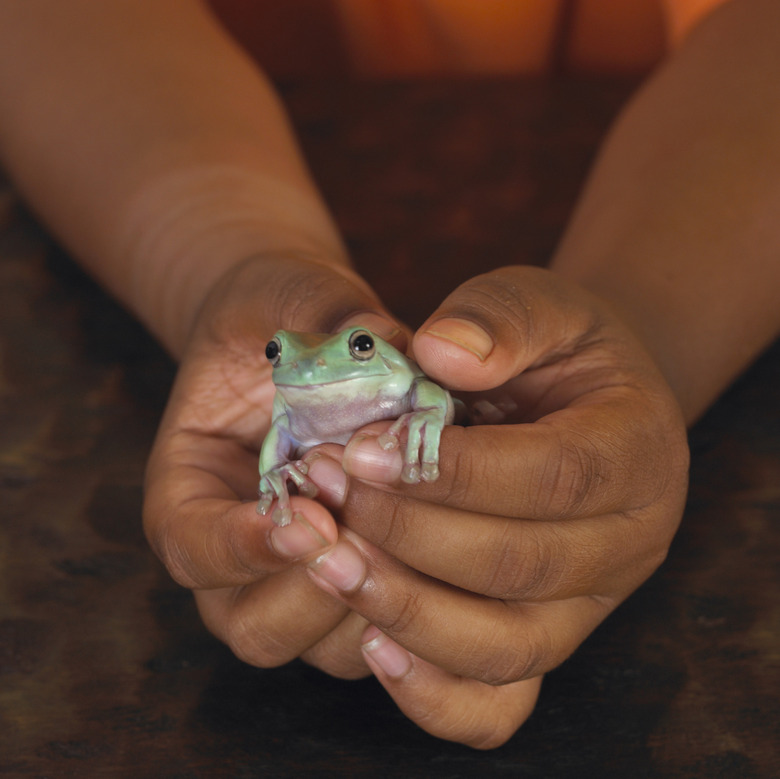Science Activities For Warm Blooded Vs. Cold Blooded
Finding activities to classify and sort animals into the two categories of the animal kingdom — warm- or cold-blooded — leads to many discoveries about animals. Warm-blooded animals maintain a constant body temperature, while cold-blooded animals' temperatures change to follow that of their environments. The comparison of animals helps children find patterns and discover relationships between animals.
Share a Story
Read a book about mother animals taking care of their offspring. Discuss how the babies are born, how the mother and father take care of the baby during their first days of life and read about how they gain independence from their parents. "My First Day — What Animals Do on Day One," by Steve Jenkins and Robin Page, a nonfiction book, explains what baby animals do on their first day of life. Compare and contrast the two types of animals' first day as you read about cold-blooded and warm-blooded animals' habits and care during the first day of life.
Display It
Display It
Divide a bulletin board into two sections — warm- and cold-blooded. Provide the children with magazines that include many pictures of animals. The students cut out pictures of all types of animals and decide if their animal picture goes with the warm- or cold-blooded animals. Talk about the characteristics of each animal with each child to help her determine which side of the board the picture goes on. Warm-blooded animal regulates their body temperatures and cold-blooded animals adapt their body temperatures to their surroundings. Birds and mammals are warm-blooded animals. Insects, fish and reptiles are cold-blooded animals.
Keeping Warm
Keeping Warm
Fat, hair and feathers help warm-blooded animals maintain a constant body temperature. The whale must endure frigid temperatures. His layer of fat — called blubber — helps his blood stay at a constant temperature. Conduct an experiment to show how fat helps the whale maintain his temperature. Let each child place his hand in an ice-cold bucket of water. Time how long he can keep his hand in the water. Next, place shortening in a plastic gallon freezer bag. Give the child a plastic glove. The student places his gloved hand in the bag with shortening on it. The shortening is meant to replicate the blubber on the whale. The student then places his hand in the glove and freezer bag in the ice-cold bucket again. He will be able to hold his hand in the water much longer since it is surrounded in fat.
Pets
Pets
Warm- and cold-blooded animals make great class pets. Hamsters or gerbils are warm-blooded animals that can be kept in the classroom. Fish, snails and crayfish are cold-blooded animals that can also be kept in the classroom. Instructing the students on the care of the animals, and observing their behavior, helps them learn about the difference in the animals. The crayfish will try to hide in their houses during the warmest part of their day. They will come out of the houses to interact with other crayfish when it gets cooler.
Cite This Article
MLA
Rickey, Susan. "Science Activities For Warm Blooded Vs. Cold Blooded" sciencing.com, https://www.sciencing.com/science-activities-warm-blooded-vs-cold-blooded-12299442/. 24 April 2017.
APA
Rickey, Susan. (2017, April 24). Science Activities For Warm Blooded Vs. Cold Blooded. sciencing.com. Retrieved from https://www.sciencing.com/science-activities-warm-blooded-vs-cold-blooded-12299442/
Chicago
Rickey, Susan. Science Activities For Warm Blooded Vs. Cold Blooded last modified August 30, 2022. https://www.sciencing.com/science-activities-warm-blooded-vs-cold-blooded-12299442/
